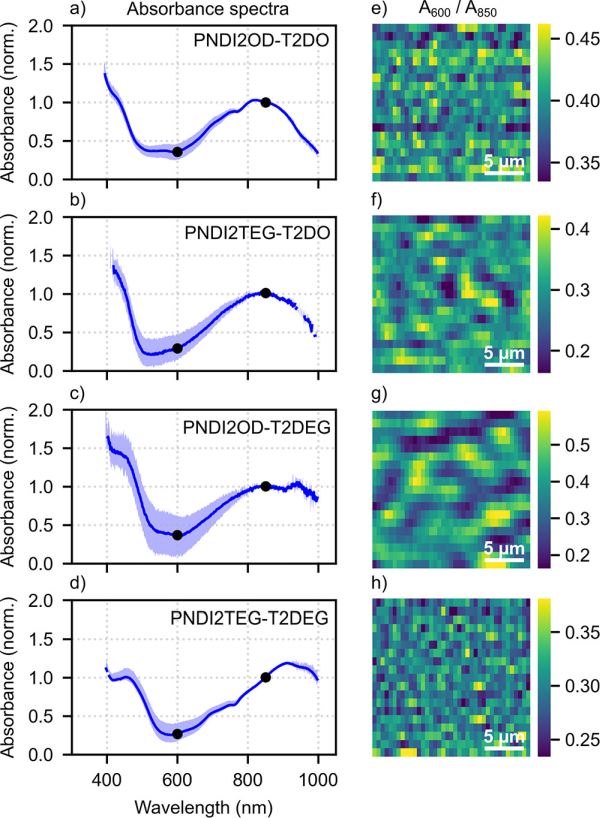
Good news! 🎉 Our collaboration with the groups of Ryan Chiechi and Jan Anton Koster recently resulted in a publication in Macromolecules:
Ye, Gang, et al. “Controlling n-Type Molecular Doping via Regiochemistry and Polarity of Pendant Groups on Low Band Gap Donor–Acceptor Copolymers.” Macromolecules 2021, 54, 8, 3886–3896.
In this paper, we investigate the morphology, doping-efficiency, and thermoelectric performance of n-doped donor-acceptor copolymer films with polar side chains. Our goal was to optimize these properties by varying the position (regiochemistry) of the side chains. To visualize inhomogeneities in such samples, I contributed spatially resolved absorption measurements.
My experiments are a powerful example of hyperspectral imaging: Our optical setup uses high-quality optics to focus light into spots as small as 500nm (the Abbe diffraciton limit). This allows us to detect absorption (and emission) spectra from small spots on the sample, and compare the spectra of different spots on the same sample.

Figure: Absorption spectra of doped copolymer films (left column), and 20x20µm maps of the absorption ratio A600/A850 (right column). Adopted without changes from Gang Ye et al., under CC BY-NC-ND 4.0 license.
In the figure above, note how the left column shows the average absorption spectrum of each sample as thick blue line, but also visualizes the degree of spectral variation as blue shaded area. This spot-to-spot variation can be translated into maps (right column) that reveal at which positions the spectra deviate most. In particular, we see that the third sample (PNDI2TEG-T2DO) exhibits structures with a larger spatial extent than other samples. This is consistent with our AFM measurements, and implies that the sidechain arrangement of this compound greatly impacts the packing (and thus doping) characteristics of the copolymer.




